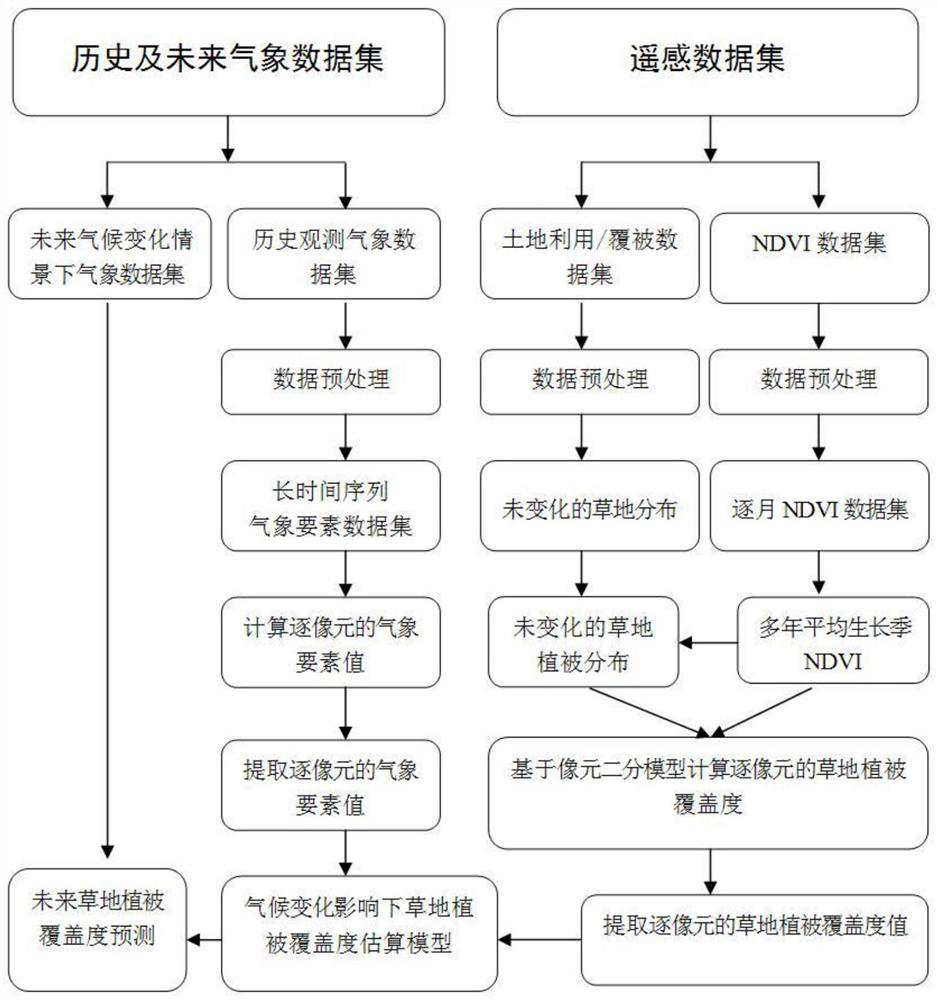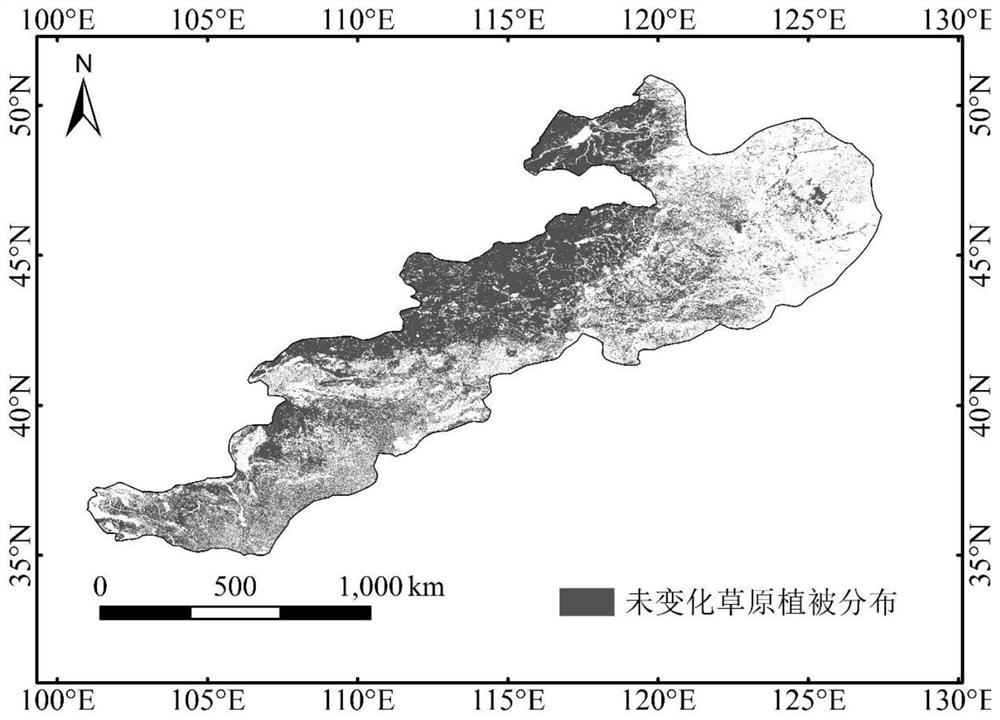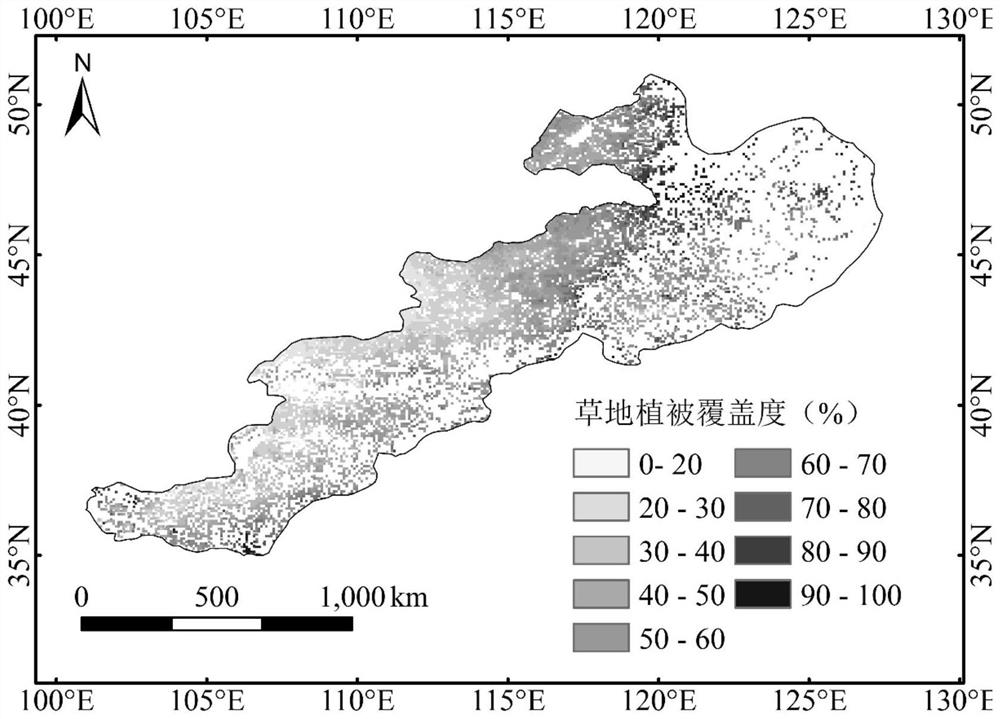Grassland vegetation coverage estimation and prediction method based on remote sensing
A grassland vegetation and prediction method technology, which is applied in calculation, complex mathematical operations, instruments, etc., can solve the problems of high cost, inability to quickly and accurately estimate and predict grassland vegetation coverage, long cycle, etc., and achieve the effect of improving the long cycle
- Summary
- Abstract
- Description
- Claims
- Application Information
AI Technical Summary
Problems solved by technology
Method used
Image
Examples
specific Embodiment approach 1
[0031] Specific implementation mode 1: In this implementation mode, a method for estimating and predicting grassland vegetation coverage based on remote sensing is carried out according to the following steps:
[0032] Step 1. Obtain the ten-day normalized difference vegetation index NDVI data set covering the study area within a certain period of time, the historical surface observation meteorological data set, the meteorological data set under the future climate change scenario, and the two-period land use / cover data set, and Preprocess the data;
[0033] Step 2: Use the maximum value synthesis method to set the NDVI data set by ten days into a monthly NDVI data set, and use the arithmetic mean method to calculate the average growth season NDVI value for a certain period of time;
[0034] Step 3: Using the ordinary kriging interpolation method, the historical surface observation meteorological data set is subjected to spatial interpolation processing and resampled to extract...
specific Embodiment approach 2
[0042] Specific embodiment two: the difference between this embodiment and specific embodiment one is that the pixel dichotomy model formula described in step seven is as follows:
[0043]
[0044] Among them, FVC is the coverage of grassland vegetation by pixel, NDVI is the NDVI value of the average growth season for many years in a certain period of time, and NDVI soil NDVI is the pixel information of completely bare and no vegetation coverage in the grassland distribution area soil , NDVI wg It is pure vegetation pixel information. Others are the same as the first embodiment.
specific Embodiment approach 3
[0045] Specific implementation mode three: the difference between this implementation mode and specific implementation mode one or two is that step nine uses multiple stepwise regression analysis to construct a pixel-by-pixel grassland vegetation coverage estimation model under the influence of climate change, and select the fitting coefficient value The largest model is used as the final grassland vegetation coverage estimation model, and the formula is as follows:
[0046] FVC=a+a 1 x 1 +a 2 x 2 +a 3 x 3 +...a k x k Formula (2)
[0047] Among them, FVC is the coverage of grassland vegetation per pixel, a is a constant term, and a 1 , a 2 , a 3 ,...a k is the regression coefficient, X 1 , X 2 , X 3 ,...X k is the value of each meteorological element in a certain period of time. Others are the same as those in Embodiment 1 or 2.
PUM
 Login to View More
Login to View More Abstract
Description
Claims
Application Information
 Login to View More
Login to View More - R&D
- Intellectual Property
- Life Sciences
- Materials
- Tech Scout
- Unparalleled Data Quality
- Higher Quality Content
- 60% Fewer Hallucinations
Browse by: Latest US Patents, China's latest patents, Technical Efficacy Thesaurus, Application Domain, Technology Topic, Popular Technical Reports.
© 2025 PatSnap. All rights reserved.Legal|Privacy policy|Modern Slavery Act Transparency Statement|Sitemap|About US| Contact US: help@patsnap.com



